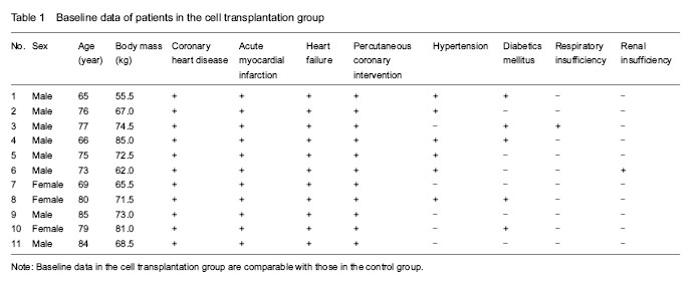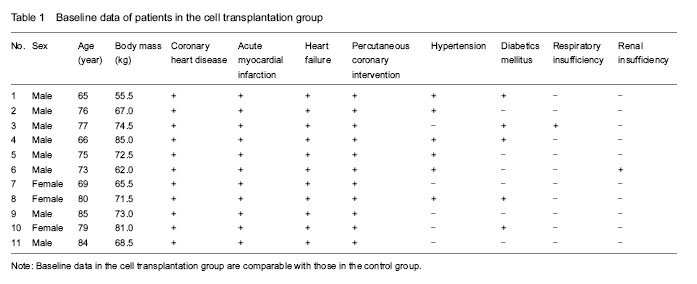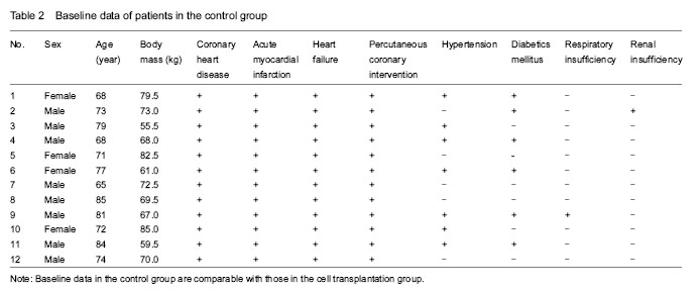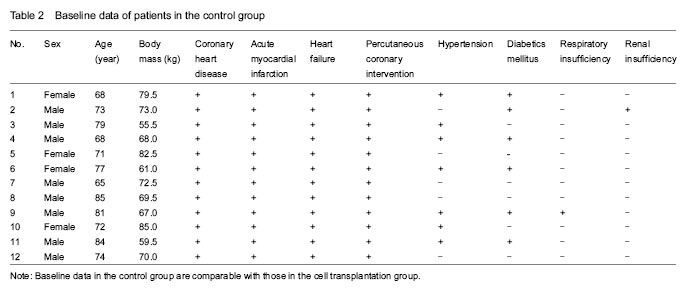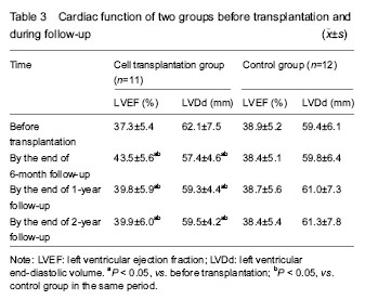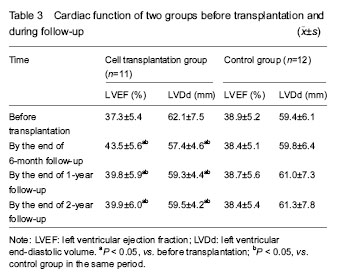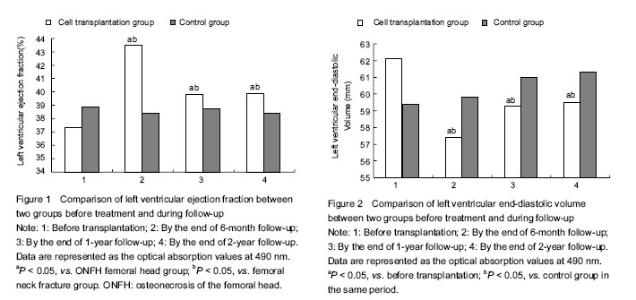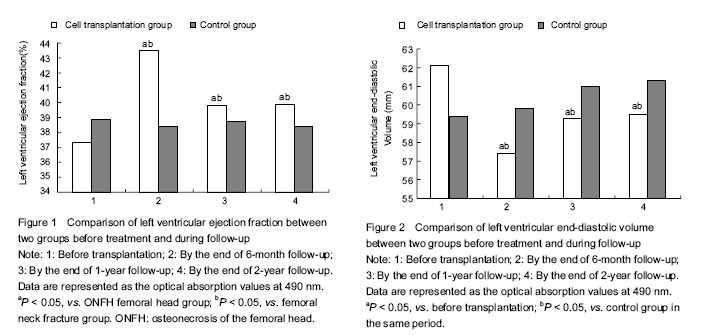| [1] Orlic D, Kajstura J, Chimenti S, et al. Bone marrow cells regenerate infarcted myocardium. Nature. 2001;410(6829): 701-705.
[2] [M K, M T, S G, et al. Allogeneic amniotic membrane-derived mesenchymal stromal cell transplantation in a porcine model of chronic myocardial ischemia. J Stem Cells Regen Med. 2012;8(3):171-180.
[3] Li TS, Hayashi M, Ito H, et al. Regeneration of infarcted myocardium by intramyocardial implantation of ex vivo transforming growth factor-beta-preprogrammed bone marrow stem cells. Circulation. 2005;111(19):2438-2445.
[4] Orlic D, Kajstura J, Chimenti S, et al. Bone marrow stem cells regenerate infarcted myocardium. Pediatr Transplant. 2003;7 Suppl 3:86-88.
[5] Kang HJ, Lee HY, Na SH, ET AL. Differential effect of intracoronary infusion of mobilized peripheral blood stem cells by granulocyte colony-stimulating factor on left ventricular function and remodeling in patients with acute myocardial infarction versus old myocardial infarction: the MAGIC Cell-3-DES randomized, controlled trial. Circulation. 2006 Jul 4;114(1 Suppl):I145-151.
[6] Kang HJ, Kim HS, Koo BK, et al. Intracoronary infusion of the mobilized peripheral blood stem cell by G-CSF is better than mobilization alone by G-CSF for improvement of cardiac function and remodeling: 2-year follow-up results of the Myocardial Regeneration and Angiogenesis in Myocardial Infarction with G-CSF and Intra-Coronary Stem Cell Infusion (MAGIC Cell) 1 trial. Am Heart J. 2007;153(2): 237.e1-8.
[7] Tse HF, Thambar S, Kwong YL, et al. Prospective randomized trial of direct endomyocardial implantation of bone marrow cells for treatment of severe coronary artery diseases (PROTECT-CAD trial). Eur Heart J. 2007;28(24): 2998-3005.
[8] Yin ZM, Li CJ, Wang Y, et al. Improvement of leR ventricular function by intracoronary transplantation of autologous bone marrow stem cell in patients with acute myocardial infarction. Zhongguo Yiyao. 2010;5(9):785-787.
[9] Wollert KC, Meyer GP, Lotz J, et al. Intracoronary autologous bone-marrow cell transfer after myocardial infarction: the BOOST randomised controlled clinical trial. Lancet. 2004;364(9429):141-148.
[10] Chu YY, Zhang WZ, Chen YQ, et al. Experimental study on adipose tissue-derived mesenchymal stem cells transplantation for Treatment of acute myocardial infarction in rabitbits. Lingnan Xinxueguanbing Zazhi. 2010;26(2): 147-153.
[11] Xing YL, Liu JH, Li M, et al. Effects of CD34+ human umbilical cord blood cell transplantation in different time on cardiac function and vascular endothelial cell growth factor secrection in rats with myocardial infarction. Zhongguo Zuzhi Gongcheng Yanjiu. 2012;16(23):4267-4272.
[12] Zhang X, Zhang T, Li W, et al. Assessment of left ventricular remodeling and cardiac function by echocardiography after transplantation of autologous peripheral blood stem cells in patients with myocardial infarction complicated cardiac inadequacy. Zhongguo Zuzhi Gongcheng Yanjiu yu Linchuang Kangfu. 2008;12(21):4111-4114.
[13] Gu X, Xu HT, Li MH, et al. Efficiency and safety of peripheral blood stem cells transplantation in elderly patients with heart failure after myocardial infarction. Zhonghua Laonian Duoqiguan Jibing Zazhi. 2009;8(5): 420-424.
[14] Janssens S, Dubois C, Bogaert J, et al. Autologous bone marrow-derived stem-cell transfer in patients with ST-segment elevation myocardial infarction: double-blind, randomised controlled trial. Lancet. 2006;367(9505): 113-121.
[15] Clifford DM, Fisher SA, Brunskill SJ, et al. Stem cell treatment for acute myocardial infarction. Cochrane Database Syst Rev. 2012;2:CD006536.
[16] Clifford DM, Fisher SA, Brunskill SJ, et al. Long-term effects of autologous bone marrow stem cell treatment in acute myocardial infarction: factors that may influence outcomes. PLoS One. 2012;7(5):e37373.
[17] Poh KK, Sperry E, Young RG, et al. Transplantation of allogeneic mesenchymal stem cells:safety of a high dose, "off-the-shelf", cellular cardiomyoplasty strategy. Int J Cardiol. 2007;117(3):360-364
[18] Hu YG. Stem cell transplantation for ischemic heart disease: Clinical feasibility and safety. Zhongguo Zuzhi Gongcheng Yanjiu. 2013;17(32): 5889-5894. |
